Case studies in e-commerce are more than theoretical studies; they provide practical, actionable insight that could make all the difference in e-commerce business decisions. Studying other companies’ successful CRO strategies explains what has worked and why.
With case studies, companies identify challenges and the measures they take to solve them for their clients. By studying their wins—and even their failures—you can better choose the strategies that will lead to a higher conversion rate.
Here are 10 case studies on conversion rate optimization for eCommerce businesses that effectively employ CRO techniques. These case studies will inspire your next campaign as they show proven solutions to common problems and measurable results.

Importance of conversion rate optimization for eCommerce
Conversion rate optimization for eCommerce means increasing the percentage of visitors taking a desired action on your website through making purchases, subscribing to newsletters, etc. It is crucial for eCommerce businesses since it positively contributes to sales and revenue.
These essential elements can be improved by changing the website’s design, product pages, and checkout processes so that eventually, more visitors become paying customers instead of trying to get more traffic.
1- Walmart: 20% increase in conversion by using A/B testing
Walmart.ca improved its website significantly with a strategy for conversion rate optimization, especially in the form of a mobile-responsive redesign. Their mobile optimization and loading speed were very poor. Walmart undertook a year-long project to make the site responsive on all devices and improve its loading speed. They streamlined the experience on the mobile side, making it much easier for customers to shop and buy items, thus expanding conversions by 20% across all devices.
Walmart’s CRO was more than just speed improvements. Walmart determined to make these changes through A/B tests and usability testing. One change included removing the “View Details” button from products that could not be bought online. With these improvements, the conversion rate only continued to rise. Mobile orders rose by 98%.
This case study exemplifies how tiny alterations, even site speed and sanitizing product information, can mean success or failure in eCommerce.

2- How BliVakker generated a $10,000 additional weekly income
Bli Vakker.no is one of Norway’s most prominent online stores selling cosmetics, with 20,000 visitors daily. However, the checkout process needed to be more efficient to boost conversions. Bli Vakker.no did some A/B tests based on analytics data.
They created a Facebook Login on their checkout page to make it easier and more convenient for users. In Visual Website Optimizer, they tested this feature with 8,000 visitors and hope it will encourage more users to complete their purchases. Interestingly, the test revealed that using Facebook Login resulted in 3% more conversions. This impressive small percentage equated to $10,000 extra each week in revenue.
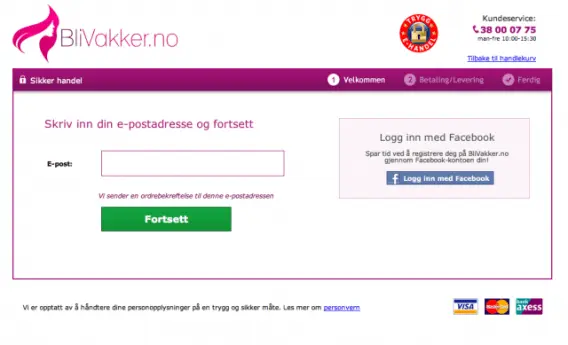
This case shows how slight changes in the checkout process and A/B testing can influence conversion rate optimization for eCommerce success. BliVakker.no developed its overall sales and optimized its checkout procedure by carefully studying what works well for its users. Continuous testing and optimization of small features of e-commerce businesses can lead to revenue growth.
3- Learn from one of the most valuable brands online: Amazon
Amazon’s CRO strategy is based on personalizing and making the user experience more seamless. The most impactful method includes personalized product recommendations. Based on customer behavior, previous purchases, and browsing history, Amazon suggests products that customers are likely to buy, thereby increasing opportunities for cross-selling and upselling by a significant margin.
Apart from these, the streamlined checkout process stands out as one of the vital elements of Amazon’s CRO strategy. With 1-Click Ordering, the company reduces customer resistance to the buying process so that customers can check out quickly.
A/B testing further helped streamline page layouts, calls to action, or product placement to enhance customer engagement and conversion rates.
Amazon also focuses on speed and accessibility. Fast load times and services such as Prime delivery enhance the user experience, which shows how vital conversion rate optimization is for eCommerce. Amazon’s CRO strategy produces massive growth each time through personalization, ease of use, and constant optimization.
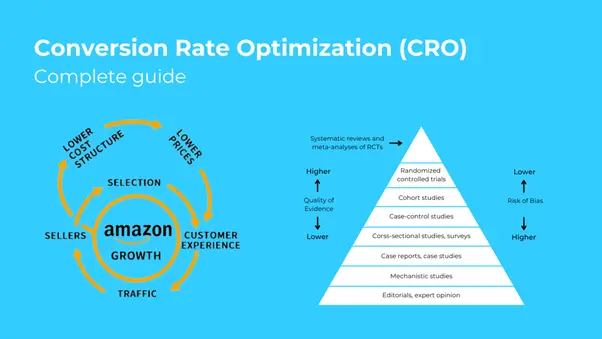
4- How Flos succeeded in getting a 125% increase in checkout conversion rates
Flos, a USA-based e-commerce company, used a strategic and data-driven approach to address a problem: the weak conversion rate at checkout.
Behavior analytics tools like heatmaps, scroll maps, and session recordings helped them identify friction points throughout the homepage to the checkout process.
They focused their improvements on targeting points, such as optimizing the homepage layout and navigation and updating the “Choose Finish” option on the product pages to include color swatches, cutting down confusion, and even looking to lighten the cart information page.
Those targeted changes improved the overall user experience, making it easier for visitors to find and purchase products.
Flos USA experienced a 125 percent increase in checkout conversions and achieved a fantastic 18X return on investment. This case study explains how data helps understand user behavior and optimize their customer journey, giving eCommerce businesses great insight into increasing conversion rates and maximizing revenue.

5- Taloon.com: Strategy for an 11.9% increase in conversion
An online hardware retailer from Finland, Taloon.com, used VWO to optimize its website and boost product page sales. It also used social sharing buttons to increase traffic and conversions. Taloon.com conducted an A/B test by comparing two versions of the product page, one featuring social media sharing icons and the other lacking them. Surprisingly, the page with no buttons increased conversions by 11.9%.
This case study shows how eliminating unnecessary items, such as social share buttons, is an excellent strategy for conversion rate optimization. It also demonstrates that everything that sounds unlikeable only allows businesses to test it. You must also develop innovative ideas, try various strategies, and discover what works for your website and drives higher conversions.
6- Increase in revenue by 17.1%; Blue Acorn’s CRO strategy
The Blue Acorn team initiated a strategic effort to redesign their eCommerce site to have a fresh and distinctive look. This was the perfect time to test their new concept; the Blue Acorn team tested the innovative layout against the traditional layout.
The Optimizely team set up an A/B test with 25,000 visitors to determine which design resonated better with users.
The test’s finding was significant: The traditional category page edged out the new design because, at a statistical confidence of 95%, it increased revenue per user by 17.1%.
This approach clarifies the need for data-based thinking during eCommerce design. It helps companies compare new concepts with established best practices to understand what generates engagement between a brand and its prospects/ customers and drives sales.
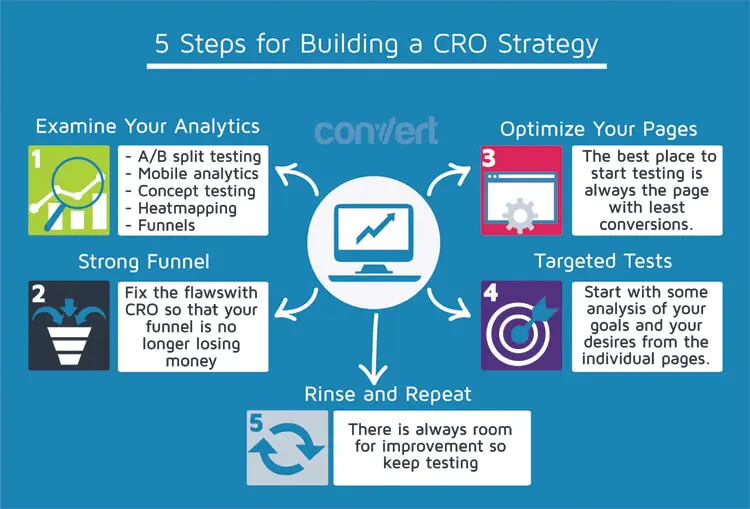
7- Hubspot’s CRO Strategy: 49% increase in conversion rate
Hubstaff conducted a split URL test on the new landing page. The goal was to improve the visitor-to-trial conversion rate, which is important for driving new user sign-ups. In this process, Hubstaff tracked important test metrics, drawing observations and insights about user behavior and interactions.
The results showed a stunning 49% leap in visitor-to-trial conversion rates for Hubstaff. Such an enormous jump testifies to the benefit of A/B testing various designs and layouts to discover which resonates best with potential customers.
The case study showcases how eCommerce businesses can optimize conversion through strategic testing and studying user behavior.

8- Domino’s strategy to increase sales By 32.2%
Domino’s refreshed its pizzas with new ingredients and looks, increasing sales by 32.2%. Then, to drive more sales, they hired programmers and digital marketers to improve their online presence. They took the initiative to provide free lunch delivery services to IT professionals to brand themselves as more than a pizza company.
Dominos became a global e-commerce brand that sold pizzas worldwide by focusing on digital marketing.
Better product offerings, intelligent digital marketing, and user-friendly platforms worked together to increase their conversion rate.
Streamlining the online order process, enhancing customer engagement, and expanding their reach have become some of the primary keys to Domino’s maintaining its number one position in the food and e-commerce sectors.

9- 55% increase in sales; Adidas CRO strategy
In 2020, Adidas set a goal to reach USD 4.3 billion in eCommerce sales, aiming for a 55% increase in online revenue. The company quickly recognized the risks associated with the pandemic and focused on a digital strategy to accelerate conversion through online channel investment.
One of the most critical components of Adidas’ CRO is optimizing its website to improve user experience. The company focused on quick loading, good navigation, and a responsive design since 70% of its traffic came from mobile devices.
Data-driven insights enabled Adidas to build a better customer experience. It utilized AI and machine learning to make product recommendations based on users’ individualized browsing behaviors.
The brand’s loyalty program, “Creators Club,” was the most engagement-crafted reason: the program involved rewards and personalized offers to customers in return for repetitive purchase behavior.
Another practical dimension of their CRO strategy is ensuring pain-free checkouts with less cart abandonment.
They removed all the complexity around payments by simplifying payment options, followed by one-click checkout and flexible payment options like “buy now, pay later.”
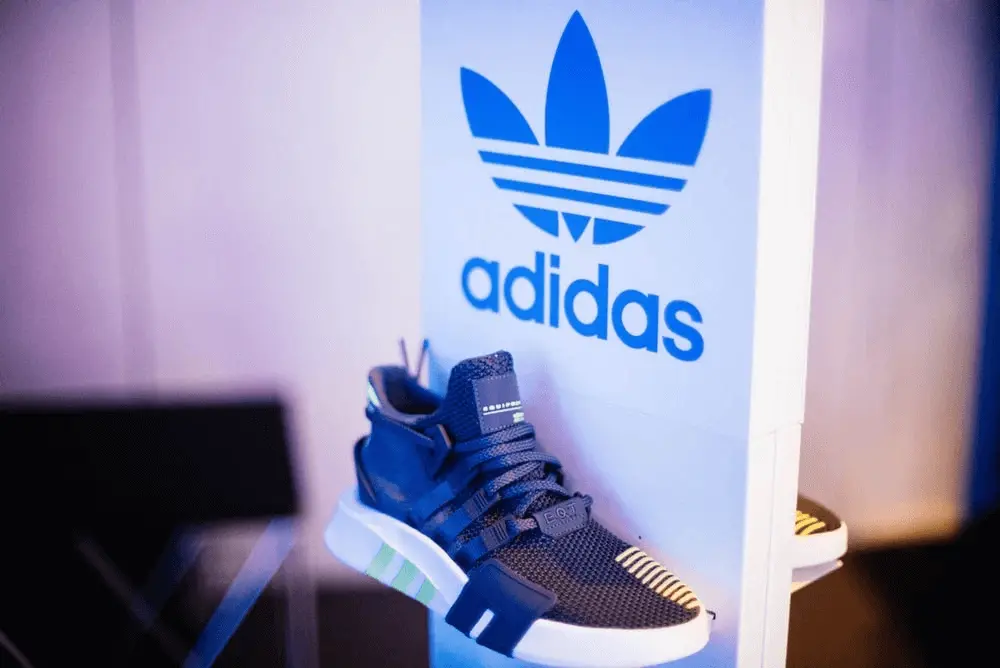
10- Archive Social’s tests series
ArchiveSocial’s CRO strategy focused on engaging the user and conversion efforts, following the three main tests.
In the first test, they tried to make the home page’s primary call-to-action (CTA) more visible. The team pushed the CTA to a more prominent position in the first fold and changed its color, which increased user interaction by over 27 days with a change of 101.68% in clicks, which meant users were getting more engaged with the new design.
The second test was on the Pricing page, part of the conversion funnel. The anchoring technique was used so that ArchiveSocial’s customers could easily see the most popular plan. The CTA button will be called attention to make it easy to decide on the best suitable plan.
Thus, the process of determining the best possible way to satisfy needs has improved. This adds a 64.76% lift to the Thank You page, affecting successful conversions.
These tests increased user engagement and overall conversion rates for ArchiveSocial. This case study significantly highlights the importance of conversion rate optimization for eCommerce.
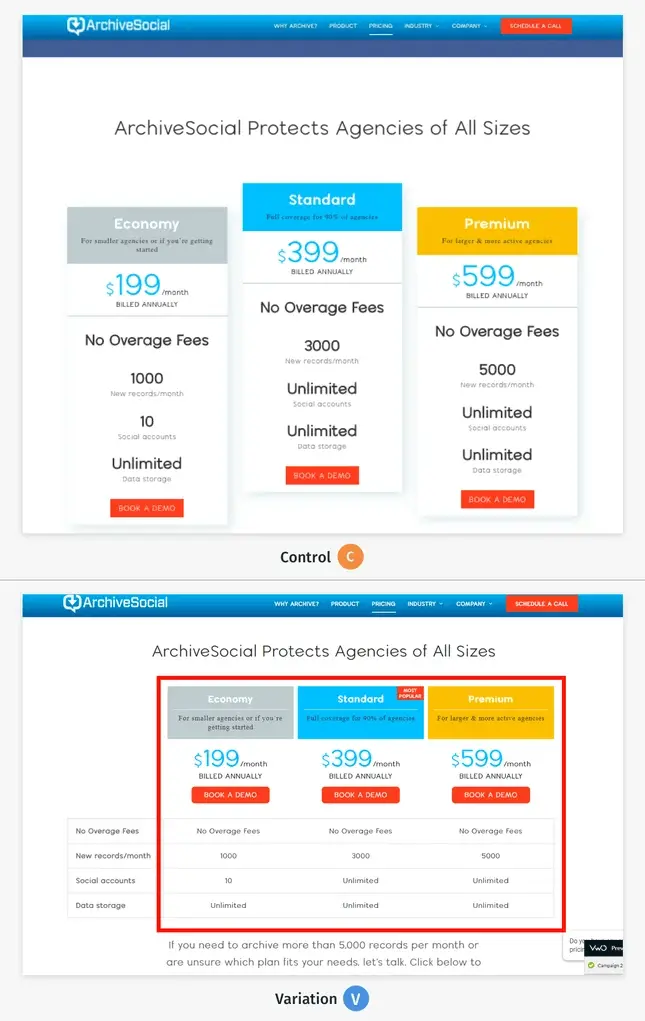
Conclusion
Case studies showcase how conversion rate optimization for eCommerce affects business success overall. From big giants like Amazon and Walmart to smaller companies like Taloon.com and ArchiveSocial, conversion rate optimization boosts sales and fine-tunes the usability experience.
These companies, therefore, use enhanced design elements, streamlined checkouts, and data-driven insights to maximize revenue and customer interactions.
Whether through A/B testing, personalized recommendations, or easy navigation, CRO techniques offer measurable value and ensure that an eCommerce business stays competitive in a fast-shifting digital world. Consistency with optimization and testing are factors that bring about continuous growth.
For the crispy CRO strategies, proven tactics, and more case studies, subscribe to our weekly newsletter!
FAQs
-
How do we optimize the e-commerce conversion rate?
By auditing and modifying the website’s design, product pages, and checkout processes, more visitors eventually become paying customers instead of trying to get more traffic.
-
What is an example of conversion rate optimization?
Walmart.ca improved its company significantly with a strategy for conversion rate optimization, especially in the form of a mobile-responsive redesign. Their mobile optimization was very poor, such as a low loading speed. Walmart undertook a year-long project to make the site responsive to all screens and faster responding. It streamlined the experience on the mobile side, making it much easier for customers to shop and buy items, thus expanding conversions by 20% across all devices.
-
How can you calculate the conversion rate of your ecommerce store?
If your online store receives 5,000 visitors and 50 conversions for a set period, its conversion rate is 1%. It is often as simple as that. Divide conversion by the total number of visitors, and you have the conversion rate.







